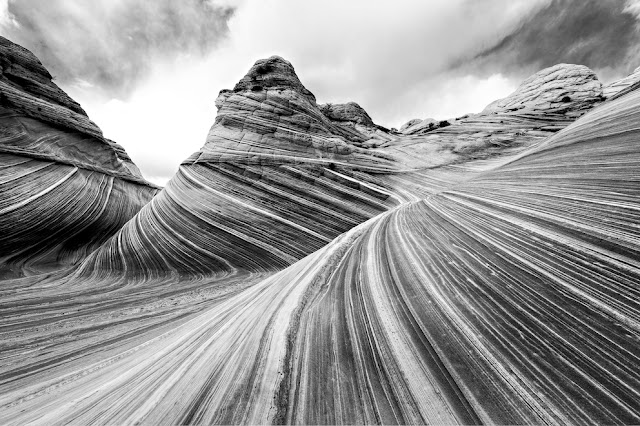VITTORIO SELLA (1859-1843)
The K2 peak (8,611m - 28,251 ft)
China - Pakistan border
Photographed during the 1909 expedition
led by Prince Luigi Amedeo, Duke of the Abruzzi
Vittorio Sella is a mountain italian climber and photographer who took
his passion for mountains from his uncle, Quintino Sella, founder of the
Italian Alpine Club. He accomplished many remarkable climbs in the
Alps, the first wintering in the
Matterhorn and Mount Rose (1882) and the first winter crossing of
Mont Blanc (1888).
He took part in various expeditions outside Italy:
- Three in the Caucasus in 1889, 1890 and 1896 where a summit still bears his name;
- The ascent of Mount Saint Elias in Alaska in 1897;
- Sikkim and Nepal in 1899;
- Possibly climb Mount Stanley in Uganda in 1906 during an expedition to the Rwenzori;
- Recognition at
K2 in 1909 (aAbove)
- In Morocco in 1925.
During expeditions in Alaska, Uganda and Karakoram (K2), he accompanied the Duke of Abruzzi, Prince Luigi Amedeo di Savoia.
Sella continues the practice of climbing into his old age, completing his final attempt in the
Matterhorn at
the age of 76; a climb he had to interrupt the rise following an
accident in which one of his guides injured. He died in his hometown
during World War II. His photographic collection is now managed by the
Sella Foundation.
His photos mountain are still considered today to be among the finest ever made.
Jim Curran believes that
"Sella remains probably the greatest
photographer of the mountain. His name is synonymous with technical
perfection and aesthetic refinement. "
The quality of the pictures of Vittorio Sella is partly explained by the
use of a view camera 30 × 40 cm, despite the difficulty of the
transportation of such a device, both heavy and fragile in places
inaccessible; to be able to transport it safely, he had to make special
pieces that can be stored in saddle bags. His photographs have been
widely distributed, either through the press or in the galleries, and
were unanimously celebrated; Ansel Adams, who was able to admire
thirty-one in an exhibition that was organized at Sella American Sierra
Club, said they inspired him
"a religious kind of sense of wonder." Many
of his pictures were taken in the mountains for the very first time in
the History, which give them a much artistic, historical but also
scientific value ; for example, one could measure the decline in the
Rwenzori glaciers in Central Africa.
K2 peak (8,611m - 28,251 ft) also known as Mount Godwin-Austen or Chhogori is the second highest mountain in the world, after Mount Everest. It is located on the China-Pakistan border between Baltistan, in the Gilgit–Baltistan region of northern Pakistan, and the Taxkorgan Tajik Autonomous County of Xinjiang, China.
The name K2 is derived from the notation used by the Great Trigonometric Survey of British India. Thomas Montgomerie made the first survey of the Karakoram from Mount Haramukh, some 210 km (130 miles) to the south, and sketched the two most prominent peaks, labeling them K1 and K2.
The policy of the Great Trigonometric Survey was to use local names for mountains wherever possible and K1 was found to be known locally as Masherbrum. K2, however, appeared not to have acquired a local name, possibly due to its remoteness. The mountain is not visible from Askole,
the last village to the south, or from the nearest habitation to the
north, and is only fleetingly glimpsed from the end of the Baltoro Glacier, beyond which few local people would have ventured. The name Chogori, derived from two Balti words, chhogo ("big") and ri ("mountain") has been suggested as a local name, but evidence for its widespread use is scant. It may have been a compound name invented by Western explorers or simply a bemused reply to the question "What's that called?" It does, however, form the basis for the name Qogir (simplified Chinese: 乔戈里峰; traditional Chinese: 喬戈里峰; pinyin: Qiбogēlǐ Fēng) by which Chinese authorities officially refer to the peak. Other local names have been suggested including Lamba Pahar ("Tall Mountain" in Urdu) and Dapsang, but are not widely used.
Lacking a local name, the name Mount Godwin-Austen was suggested, in honor of Henry Godwin-Austen, an early explorer of the area, and while the name was rejected by the Royal Geographical Society, it was used on several maps, and continues to be used occasionally.
The surveyor's mark, K2, therefore continues to be the name by which the mountain is commonly known. It is now also used in the Balti language, rendered as Kechu or Ketu (Urdu: کے ٹو). The Italian climber Fosco Maraini argued in his account of the ascent of Gasherbrum IV
that while the name of K2 owes its origin to chance, its clipped,
impersonal nature is highly appropriate for so remote and challenging a
mountain. He concluded that it was ...
K2 is the highest point of the Karakoram range and the highest point in both Pakistan and Xinjiang.
%20Grand%20Canyon%20National%20Park:%20High%20horizon%20(1941)%20Gelatin%20silver%20print%20National%20Archives%20Still%20Picture%20Branch,%20College%20Park%20MD.jpg)
%20-%20Mount%20UShba%20(%204710m)%20-%201889-90%20CAucase.jpg)


%20Moon%20and%20Half%20Dome,%20Yosemite%20National%20Park,%20California%201960,%20printed%201974%20Medium:%20Gelatin%20silver%20print%20The%20Metropolitan%20Museum%20of%20Art,%20New%20York%20(Gift%20of%20Ansel%20&%20Virginia%20Adams).jpg)
%20-%20Mount%20Williamson%20Sierra%20NEvada%20%201944.jpg)
-%20K2%20%20in%201909.jpg)








